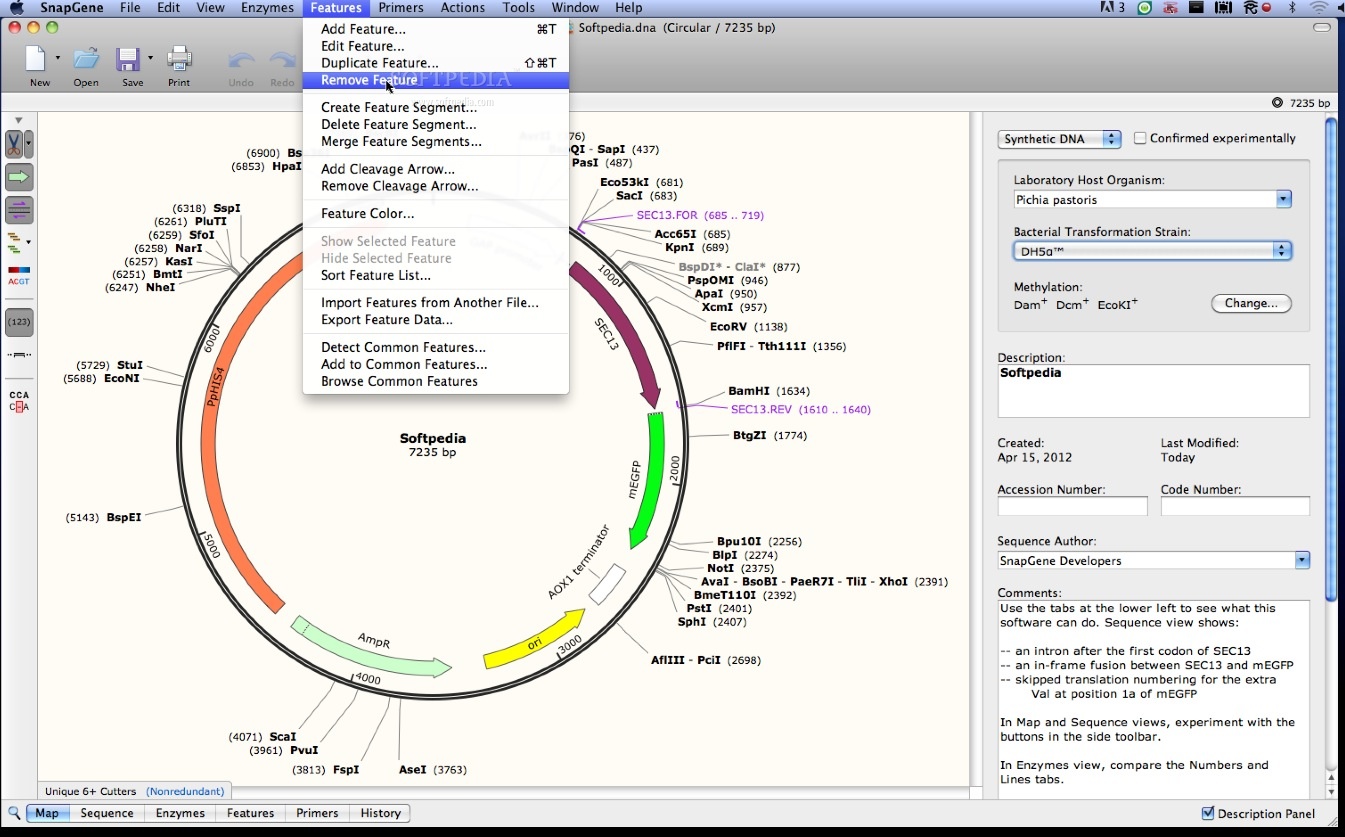
Import of features and primersRecord every step:Comprehensive “Undo” capability.Manage your data:Feature and primer lists.TA and GC cloningAvoid making mistakes:Restriction site overview.NEBuilder HiFi DNA Assembly enables virtually error-free joining of DNA fragments, even those with 5´- and 3´-end mismatches without using restriction enzymes. Directional TOPO cloning employs linearized vectors such as pET200/D-TOPO to clone PCR products in a directional manner.These PCR products are typically generated with high-fidelity polymerases.

Blunt TOPO cloning employs linearized vectors such as pCR-Blunt II-TOPO to clone PCR products with blunt overhangs.These PCR products are typically generated with Taq polymerase. TOPO TA cloning employs linearized vectors such as pcDNA™3.4 TOPO to clone PCR products with 3’-A overhangs.SnapGene simulates three different variations of this method. PCR products can be cloned at high efficiency using TOPO cloning, which is performed with linearized vectors that have vaccinia virus topoisomerase I covalently bound to the 3’ phosphates.GC cloning is similar, and is based on the finding that Taq actually adds a mixture of 3′ A and 3′ G overhangs. These sticky ends enable insertion into a linearized vector with complementary 3′ T overhangs. It takes advantage of the 3′ A overhangs added during amplification by Taq and some other polymerases.

TA cloning is used to clone PCR products.
#Snapgene viewer for mac software#
SnapGene was the first software to simulate this procedure.įor the In-Fusion reaction, a linearized vector is mixed with one or more PCR products that have overlapping ends. Then incubate the amplified products with assembly enzymes, and transform the mixture into bacteria.Ĭlontech’s In-Fusion cloning is a remarkably versatile method for creating seamless gene fusions. To simulate this method, SnapGene provides an intuitive interface.įor Gibson Assembly, PCR amplify the DNA segments to create overlapping ends. Gibson Assembly is a popular way to insert fragments into a plasmid without using restriction enzymes. Multisite Gateway cloning allows up to four fragments to be inserted simultaneously. Then the fragment is transferred to a Destination Vector in an LR cloning reaction, creating the final Expression Vector. SnapGene simulates different variations of this method.įor standard Gateway cloning, a DNA fragment is inserted into a Donor Vector in a BP cloning reaction, creating an Entry Vector. Plasmids can be constructed without restriction enzymes using Gateway cloning, which inserts DNA fragments by recombination. Restriction cloning is a common cloning technique where restriction enzymes are used to prepare an insert and a vector for ligation. Specialised cloning tools ensure fast accurate construct design for all major molecular cloning techniques.Simulate standard PCR using your own primers, or allow SnapGene to design them automatically.Intuitive technology identifies design flaws in cloning procedures so they can be corrected.SnapGene helps you identify and avoid common mis-steps by keeping track of details like DNA methylation and phosphorylation.Clear visual schematics let you see exactly how your construct will be put together.
#Snapgene viewer for mac windows#

Improve accuracy while moving faster, so you save time and money. It’s fast, smart and extremely user-friendly. SnapGene is the most popular cloning tool for a reason. The streamlined interface supports a range of cloning and PCR manipulations. SnapGene offers the fastest and easiest way to plan, visualize, and document your molecular biology procedures. The Industry’s Most Popular Molecular Cloning Tool.


 0 kommentar(er)
0 kommentar(er)
